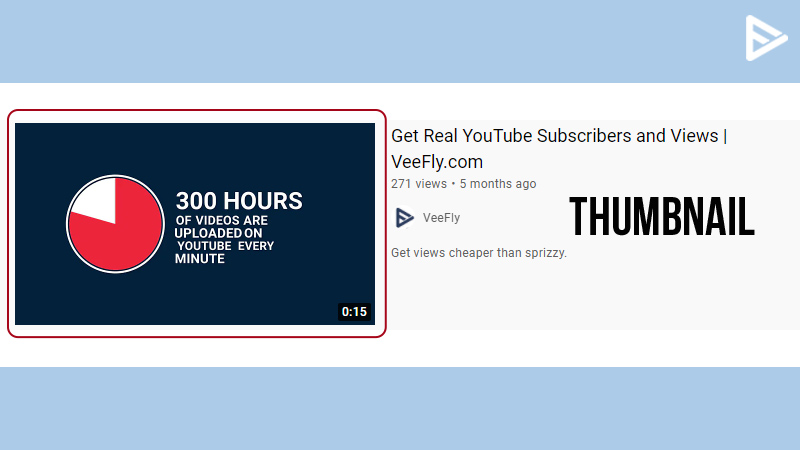Are you looking to consistently rank your videos higher on YouTube? YouTube SEO sounds overwhelming, but at least 3 out of 5 videos on Google’s search results are YouTube videos. It indicates that YouTube is the world’s second-largest search engine after Google and the importance of YouTube SEO. With over 2 billion active users and more than 500 hours of videos uploaded every minute, it is the best platform for video marketing.
By following the best video SEO practices, whether a creator or brand, you can easily rank your videos on YouTube. You have to start with creating or optimizing your YouTube SEO strategy that leads to consistent growth of your channel. Read until the end to learn in-depth about YouTube SEO strategy and how to use the algorithm in your favor to get more views, attract higher organic traffic, and grow your subscribers.
What is YouTube SEO Strategy?

YouTube SEO strategy is the practice of optimizing your videos to rank on YouTube’s search results page. This includes optimizing your YouTube channel, playlists, descriptions, metadata, cards, thumbnails, tags, etc.
How Does YouTube Search Work?
Now let’s look at how it works. Since Google took YouTube’s ownership, all videos uploaded on YouTube are indexed immediately by Google. Optimized content lets the search engine know your content better. Since the algorithm cannot crawl images and videos, your text plays an important role in understanding what your videos are all about.
How To Optimize Your YouTube SEO Strategy?
Here are the top 4 practices to maximize your YouTube video views and boost your channel’s ranking.
1. Keyword-optimized title, description, and tags

Keywords are crucial to video ranking. They help you describe your videos and help users find your content easily. For example, if your video is about gaming, make sure to mention it in all the text that supports your video. This will help the algorithm suggest your video to users that are looking for it.
Here’s how you can find the right keywords for your video content. Keyword research is done using various tools like Google Trends, Ahrefs, and YouTube autosuggest. These tools will help you understand the different keyphrases viewers use to find videos. Next, make a list of the keywords that are relevant to your video and use them accordingly.
Title
A YouTube title fits 100 characters, out of which 70 characters can be seen in the search results. Therefore, keep your YouTube video title short and crisp while using the keywords naturally. For example, you can use clickable words like “how-to,” “tips,” etc.
Description
The YouTube description fits in 5000 characters, out of which 166 characters are visible on the first line. Use your primary keyword in the first 100 characters, and remember to include social links, website links, etc. Learn how to write YouTube descriptions with the help of our guide.
Tags
YouTube has a 400-character limit across all tags. Therefore, each video should have 5 to 8 tags which should include your primary and complementary keywords.
2. Customized YouTube Thumbnail With YouTube SEO Strategy

YouTube video thumbnail is a snapshot of your video that appears on YouTube’s search results page. This tiny image leaves an impression that makes the viewer want to click on it. Usually, YouTube selects a random frame from your video as a thumbnail. However, you can customize your thumbnail into something more appealing and clickable.
Keep your thumbnail relevant to your content; use fewer text and more visuals. Many creators opt for bright colors to grab more attention, while others focus on their branding elements. You can create eye-catching thumbnails using tools like Canva and Adobe Photoshop. Remember that your thumbnail represents your video and your keyword. Use high-quality images, and keep the aspect ratio 16:9.
3. Use Playlists

YouTube playlists are an amazing way to organize your videos for a better user experience. When YouTube creators deal with multiple niches on their channel, they use playlists to divide them into categories. For example, Singer Taylor Swift has multiple playlists showcasing her different albums and behind-the-scenes videos in the image mentioned above. This helps her fans navigate through her videos with ease.
This practice will help boost user engagement on your channel. Another advantage of creating playlists is that your videos play on auto, one after the other. This keeps your audience from leaving your channel.
4. Add Video Transcripts
Source: Yahoo
Video transcription is a process to translate a video’s audio into text. Add video transcripts to your YouTube video’s description helps boost your SEO ranking. Although YouTube’s description box can fit 5000 characters, you can use this space to fit in a short version of your transcript and include a link that takes them to the full version.
Transcripts help increase traffic and engagement. Since the search engine cannot crawl audio, your transcript will help it understand your content and get it indexed and ranked. Your transcript will also help make your YouTube video more searchable, so remember to include your keywords in the transcript and your video.
Tools to Try for YouTube SEO
The tools can help you create video content that is appealing to the audience and make content production smooth.
1. Canva
One of the most famous tools for creating content is Canva. The tool is known for its UI and beginner-friendly design. It can help you create logos, social media posts, cards, and more.
Canva has thousands of templates. You can use it to create attractive thumbnails for YouTube videos. You can use a pre-made template or drag-and-drop features. This thumbnail can increase your click-through rates.
2. Ahrefs Keyword Research
The right keywords are essential for any SEO strategy. The Ahrefs tools can help you find keywords that can be used to target the relevant audience. Look at ranking keywords trending in your niche and what potential traffic keywords will bring.
Sort keywords according to search results, including YouTube. Use keyword research to create YouTube titles, hashtags, thumbnails, descriptions, etc. You can create YouTube content based on the trend, but keywords can bring engagement in the long term.
3. TubeRanker
If you are looking for tools to optimize your video according to YouTube’s algorithm, TubeRanker can help you. The SEO tools can generate tags for your video. It can also do keyword research and track what is working on YouTube.
TubeRanker is a primary SEO tool. It allows you to perform a channel audit and determine what you need to grow your channel. It also includes other AI tools such as a title, hashtags, and description generator.
4. VeeFly YouTube SEO tools
Veefly is an all-in-one SEO tool that streamlines YouTube content creation. Using just one tool, creators can generate a title, hashtag, tag, description, etc. VeeFly also has a Thumbnail maker that uses AI to create thumbnails.
5. TubeBuddy
A prominent tool to use when optimizing your YouTube channel. The tool can do language translation. You can add subtitles and closed captions to YouTube videos. This makes the content accessible for a global audience.
Additionally, there are more features, such as a keyword explorer and rank tracker. Once you are finished with the optimization, you can also promote your YouTube video.
What are YouTube SEO Guidelines
Google and YouTube provide the most search results. Google provides blog and video results, and YouTube provides video results. Both use almost the same SEO strategy to rank content.
You can also apply standard SEO practices on YouTube. Cover the SEO segments step by step. Use relevant keywords in titles, descriptions, and tags. Create clickable thumbnails to increase CTR. Use proper descriptions with keywords and hashtags. Use verbal appeal for likes, comments, and shares. Hook the audience to improve the view metric. Add CC and subtitle files for accessibility.
You can also optimize the channel by organizing videos into a playlist and using your homepage for a better user experience.
Track your progress and change SEO strategy accordingly. Eventually, your SEO efforts will bring engagement.
Frequently Asked Questions
Q1. What is SEO on YouTube?
YouTube SEO involves optimizing your videos and channel to rank them higher in YouTube search results. The process includes a combination of various strategies like keyword research, optimizing video descriptions, creating playlists, etc., that help to attract more organic traffic.
Q2. Does SEO really work for YouTube?
Yes. YouTube SEO indeed works to generate the desired results and rank your videos higher in user search results. Just like any other search engine, the YouTube algorithm is designed to deliver content that answers user’s specific search queries.
Q3. How do I optimize my YouTube SEO Strategy?
You can execute the following steps to optimize your YouTube channel SEO strategy.
- Carefully research and select your keywords
- Craft high-quality, engaging videos
- Create captivating thumbnails
- Include keywords multiple times in your video
- Optimize your video title and description using the right keywords
- Use relevant video hashtags
- Offer subtitles and add a transcript to your video description
Q4. How to get 100% SEO score on YouTube?
To achieve a 100% SEO score, optimize your videos and channel. Do keyword optimization, create engaging thumbnails, titles, and descriptions, increase watch time, add CC & transcripts, etc. These can result in a high SEO score.
Q5. How many keywords should I use for SEO on YouTube?
The standard practice is to use 1-2 keywords in the Title and 3-5 in descriptions. The tags added to the video should also have keywords, as should captions and chapters.


